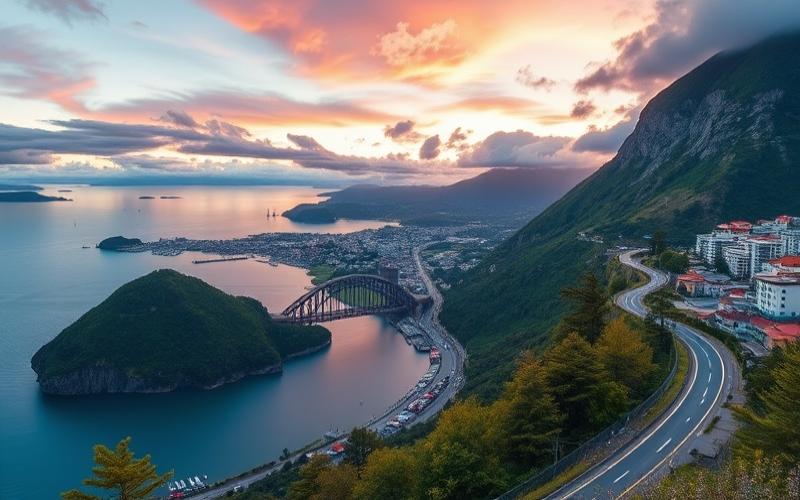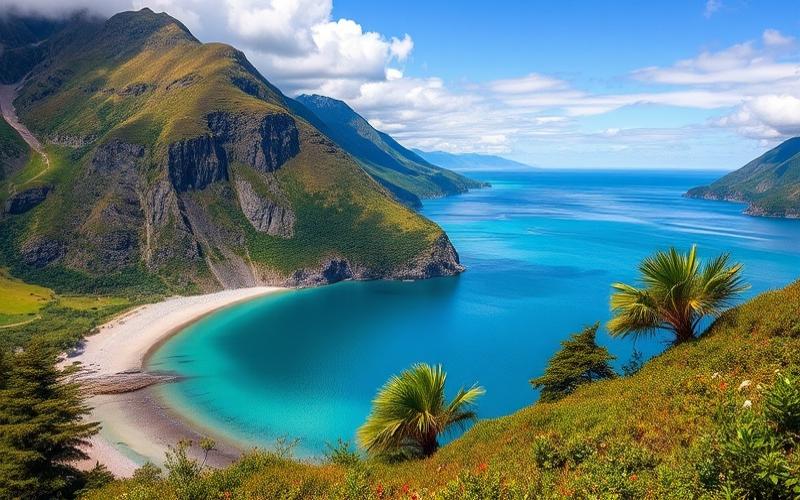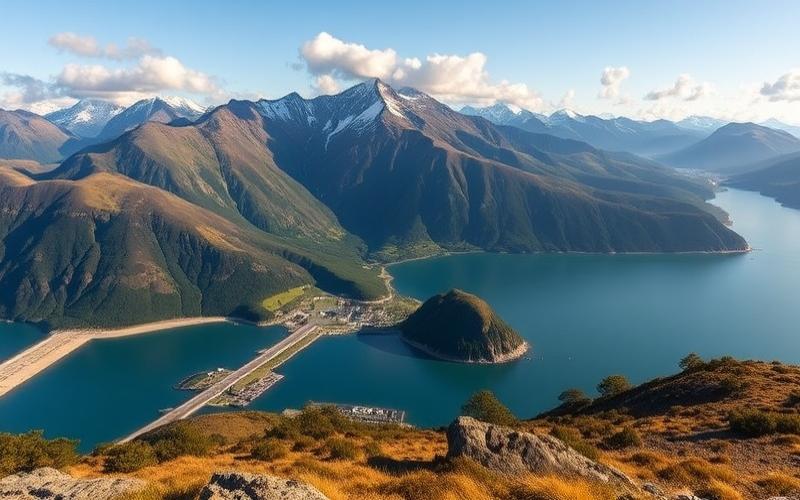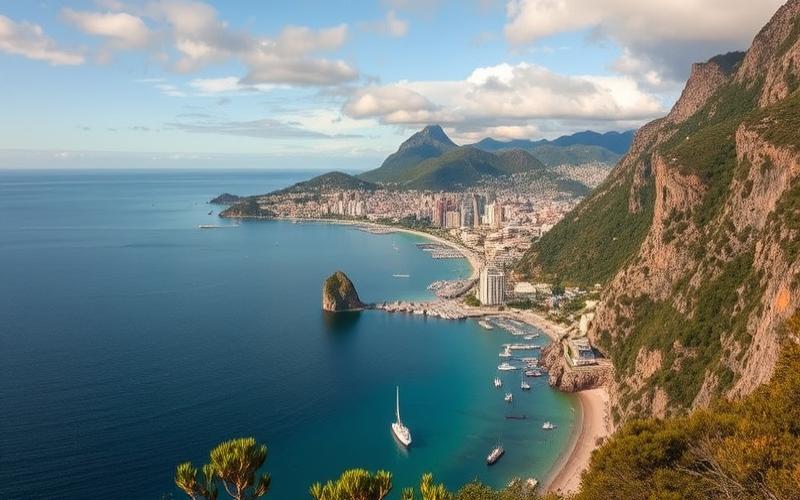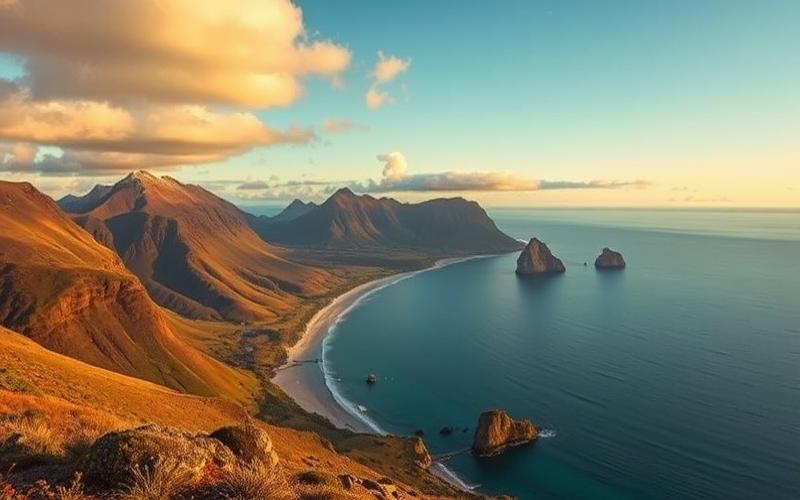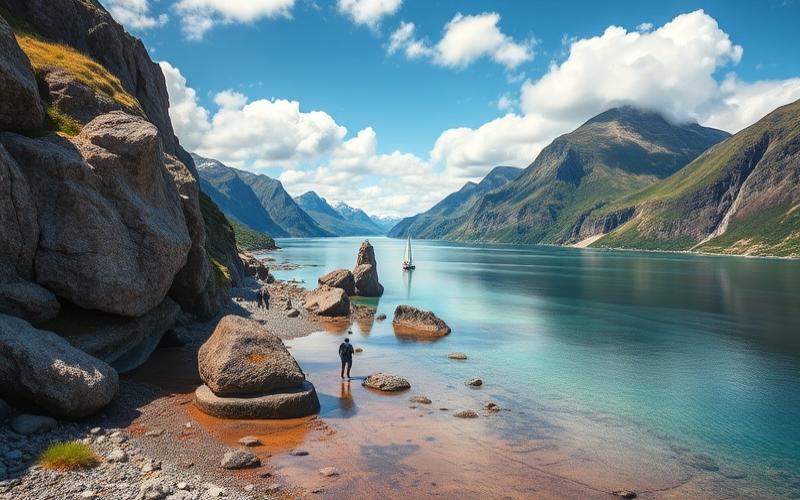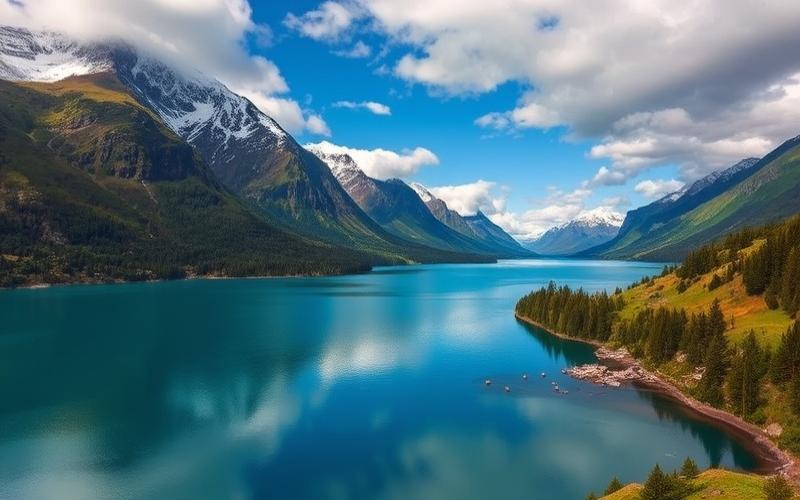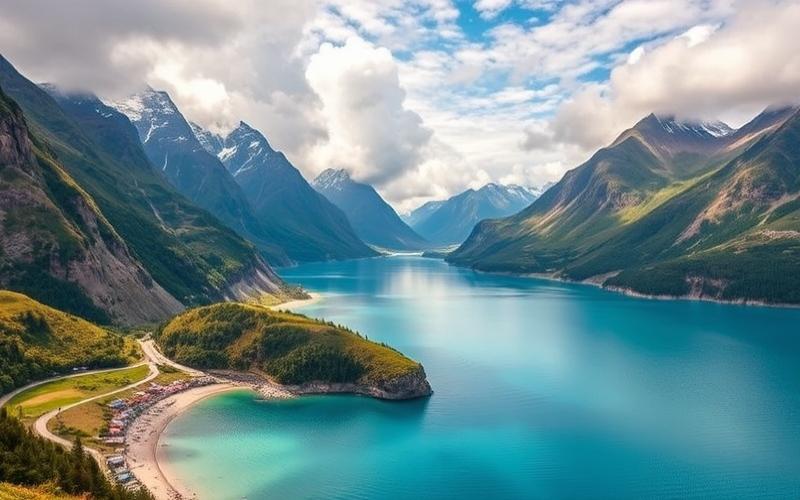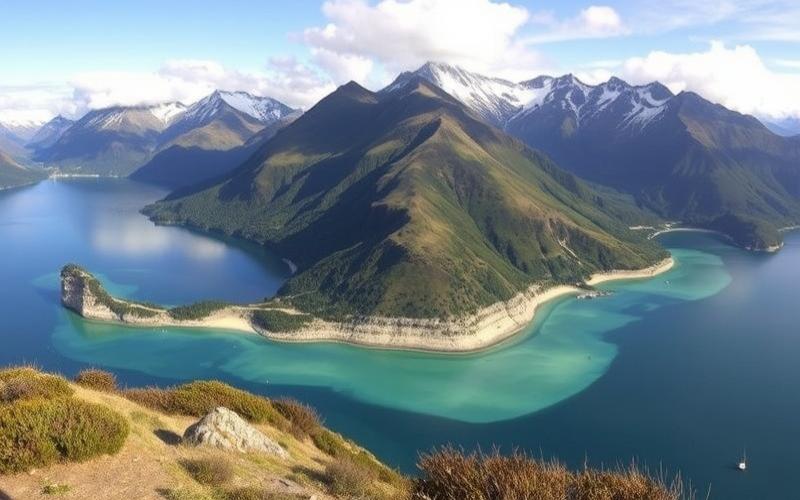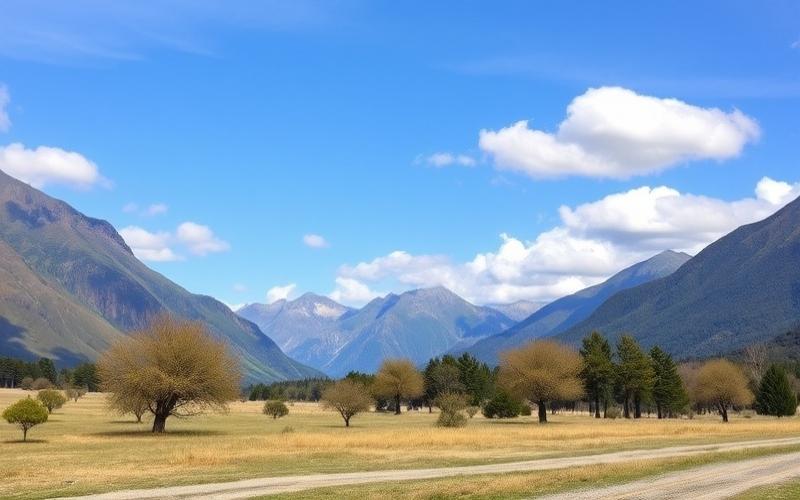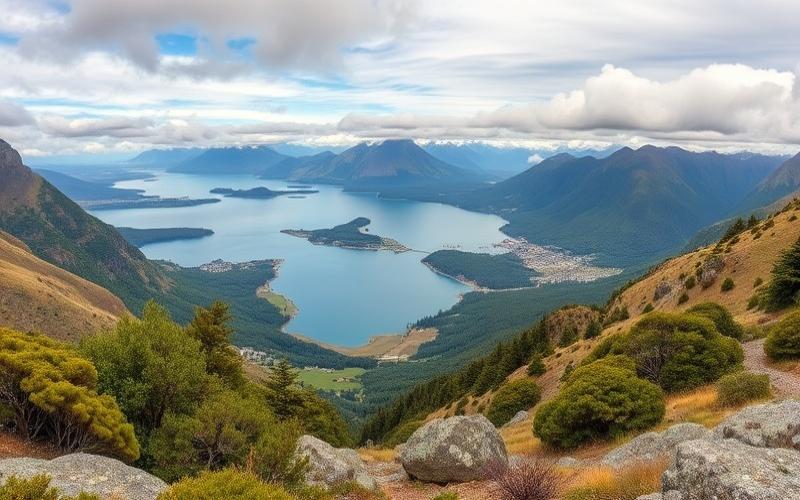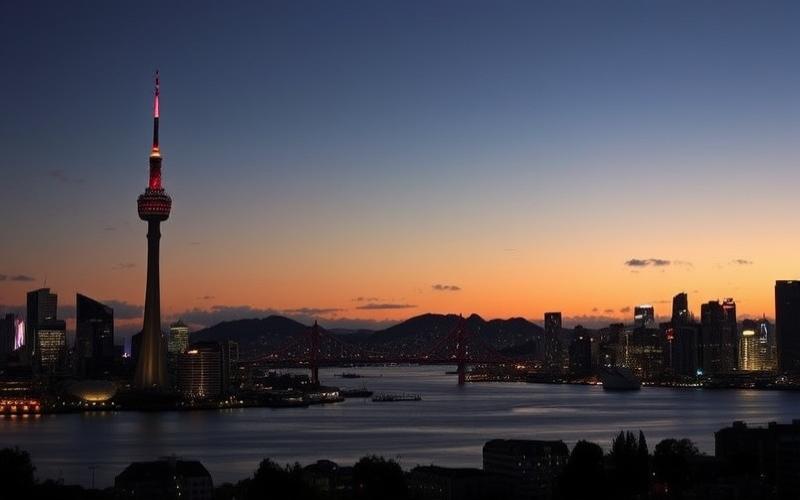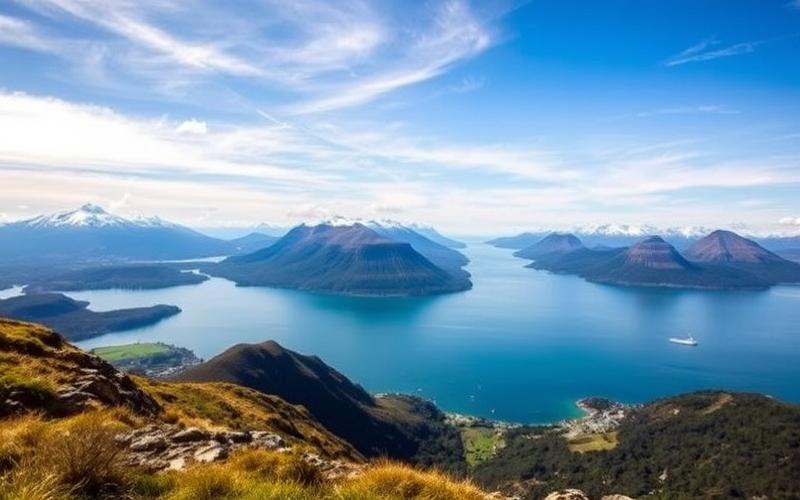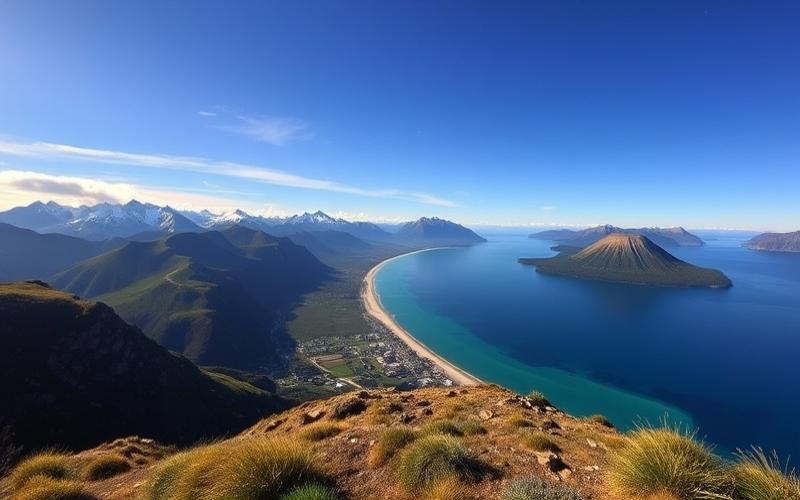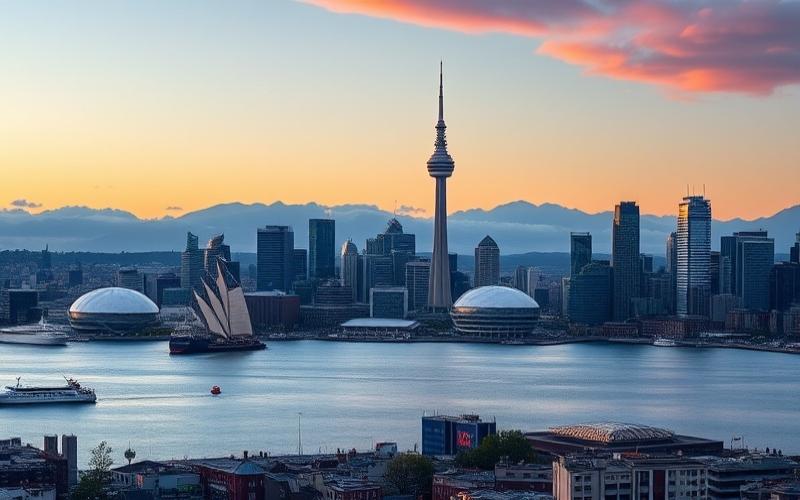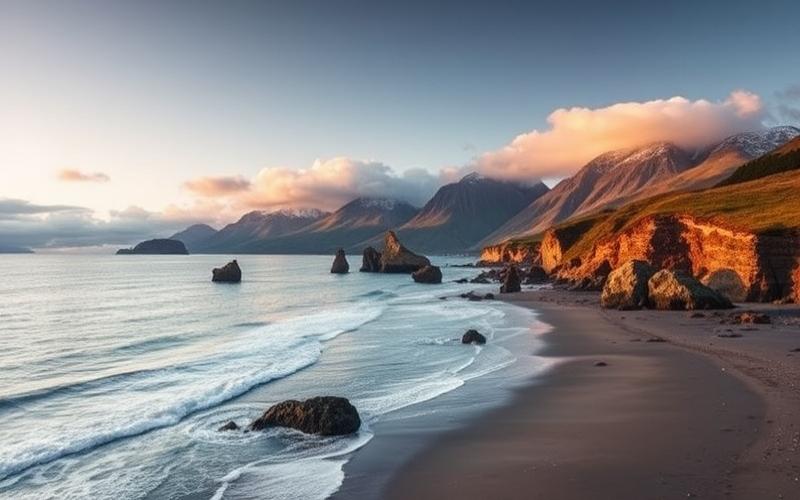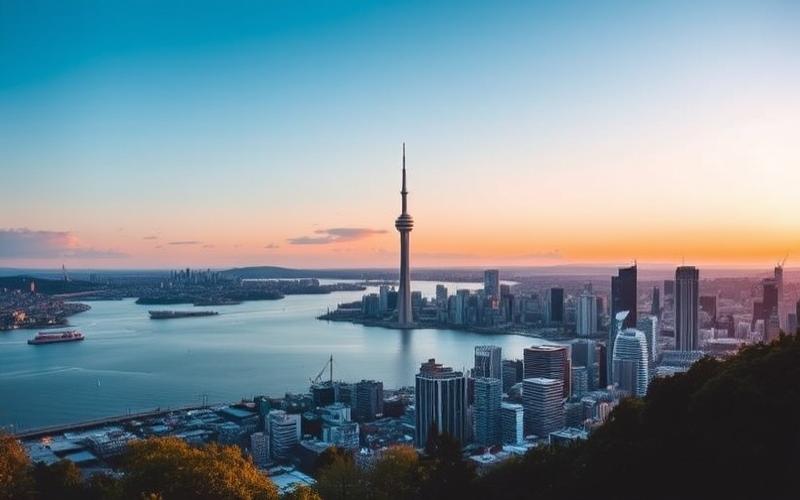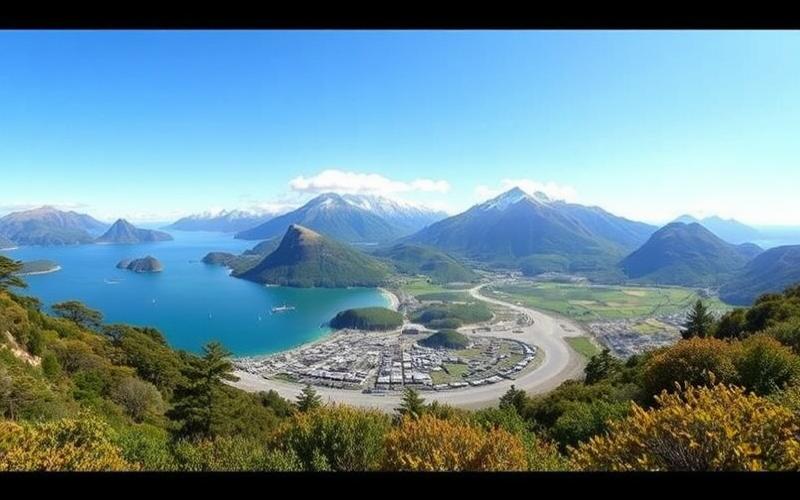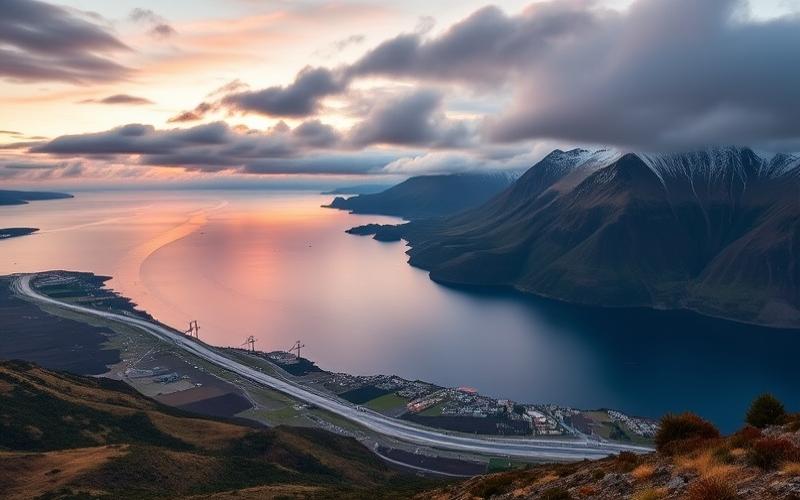
 Published on and written by Cyril Jarnias
Published on and written by Cyril Jarnias
Nestled in the Heart of the South Pacific, New Zealand
New Zealand is far more than just a dream tourist destination—it’s a true breeding ground for artistic expression where artist villages emerge as creative oases.
Across the country, these dedicated communities weave a rich cultural tapestry, attracting both art enthusiasts and curious investors.
Cultural Investment or Economic Opportunity?
But the question remains: are these villages primarily an essential cultural investment for national identity, or do they conceal a financially profitable dimension capable of attracting entrepreneurs?
Good to Know:
This investigation invites you to discover how artistic heritage combines with financial prospects, offering a fresh perspective on the prosperous and vibrant appeal of this unique phenomenon.
Artist Villages in New Zealand: A Haven for Creativity
Artist villages in New Zealand offer a spectacular natural environment and cultural richness that foster creative fulfillment. Nestled between wild beaches, lush hills, or sunny vineyards, these villages are often removed from urban bustle and bathed in unique light that inspires painters, sculptors, artisans, and writers.
Iconic Examples of Artistic Villages:
| Village | Natural Environment | Artistic Features |
|---|---|---|
| Nelson | Between Tasman Sea and mountains | Numerous contemporary art galleries; renowned local artisan markets |
| Waiheke Island | Island covered in vineyards, beaches | Dynamic artist community; annual festivals (Sculpture on the Gulf) |
| Raglan | Endless beaches on the west coast | Surfing hotspot; year-round open studios |
| Akaroa | Waterfront village with French influence | Diverse local crafts; regular cultural events |
In these places, proximity to nature plays a fundamental role: the landscape becomes raw material for artists while the peaceful pace encourages introspection and collaboration. Local galleries exhibit both established and emerging artists’ works. Artisan markets allow creators to engage with the public and each other, strengthening community bonds.
Impacts of Local Artisans and Galleries:
- Promotion of regional craftsmanship
- Creation of collaborative networks (collective workshops)
- Increased tourist appeal
- Economic development around artisanal trades
The unique atmosphere is often described by residents themselves:
“The light here changes throughout the day: it brings every color on my canvas to life,” shares a painter based on Waiheke Island.
“In Nelson, there’s always someone to share a new idea over coffee or at the Saturday morning market,” testifies a local ceramicist.
Institutional support is tangible: many of these initiatives benefit from active local authority support, providing public spaces that can be transformed into temporary exhibition venues or subsidizing certain cultural events. Villa Antipode exemplifies this dynamism through its residencies supported by the French Institute—a program fostering international exchanges while embedding itself in New Zealand’s cultural fabric.
The private sector also engages through:
- Occasional funding (prizes/competitions)
- Partnerships with restaurant-galleries or boutique hotels
- Direct purchases from artists to decorate offices/villas
This is how an ecosystem develops that’s conducive not only to individual growth but also collective development—where artistic innovation rhymes with daily conviviality.
Good to Know:
Artist villages in New Zealand, such as Nelson and Waiheke Island, are nestled in stunning natural landscapes between spectacular mountains, idyllic beaches, and lush forests, providing an inspiring backdrop conducive to creativity. These dynamic artistic communities attract talented artisans whose galleries and workshops act as cultural catalysts, making these villages hubs of innovation and collaboration. Testimonials from artists like those in Nelson, where “the collective energy is palpable,” illustrate the unique atmosphere prevailing in these creative havens. Support from local authorities, such as grants for artistic projects and organization of cultural events, combined with private sector involvement, fosters the flourishing of these communities. These combined elements make these villages not only prized artistic destinations but also profitable cultural and economic investments.
The Emergence of Creative Eco-Villages in New Zealand
The emergence of creative eco-villages in New Zealand draws from historical and cultural contexts marked by the search for alternatives to traditional urban models, the influence of the global hippie movement of the 1970s, and a desire to experiment with new forms of collective living. These communities have structured themselves around values such as environmental sustainability, social solidarity, and artistic expression.
Historical and Cultural Reasons:
- Desire to break away from urban consumerism.
- International influence: inspiration drawn from pioneering eco-villages like The Farm in the United States, founded on principles of permaculture, organic farming, community self-management, and respect for living beings.
- Search for balance between relational ecology (social bonds) and environmental ecology (sustainable resource management).
Iconic Artistic and Environmental Projects:
- Regular organization of artistic workshops (local wood carving, ceramics using natural clays), seasonal festivals showcasing local talent.
- Creation of educational centers offering training in permaculture, natural building, or creative recycling.
- Collective initiatives such as bio-intensive shared gardens or community reforestation.
| Integrated Sustainable Practices | Concrete Examples |
| Permaculture | Edible landscaping |
| Renewable Energy | Collective solar panels |
| Eco-Construction | Earth-based houses |
| Participatory Management | Citizen assemblies |
Economic and Cultural Impact on Surrounding Areas:
Boost to local tourism through immersive workshops, themed guided tours focused on eco-craftsmanship or natural wellness.
Direct support for the regional economy through promotion of local artisanal products at weekly markets open to outside visitors.
Specific examples:
- Earthsong Eco-Neighbourhood near Auckland – recognized for its innovative participatory model combining clustered eco-housing and shared common spaces.
- Wellington, officially designated a “creative capital,” has seen its appeal increase thanks to targeted development of artistic industries (particularly independent film), which also benefit surrounding satellite villages.
Influence on Local Real Estate Market:
Eco-villages tend to stimulate a moderate but steady rise in surrounding land prices:
- Growing attraction to alternative lifestyles
- Increased demand for buildable land compatible with ecological charters
However, this phenomenon remains tempered by voluntary selection aimed at preserving stable demographic balance.
Established Community Dynamics:
Non-exhaustive list:
- Horizontal governance based on consensus
- Daily sharing (shared tools; food cooperatives)
- Intergenerational inclusion fostering transmission of manual/artistic knowledge
National Positioning and Growing Interest:
New Zealand’s eco-villages are now cited as innovative models capable of inspiring both public policies and private initiatives. Their growing reputation attracts an increasing number of international project leaders each year coming to draw inspiration in situ.
Comparison of profitable potential vs cultural benefits:
| Criterion | Profitable Potential | Cultural Benefits |
| Direct Revenue | Sustainable tourist rentals | Cultural & artistic transmission |
| Real Estate Leverage | Progressive land value increase | Strengthened local identity |
| Activity Diversification | Paid workshops & annual events | Social cohesion & civic innovation |
In summary, New Zealand’s creative villages embody a dual economic/cultural engine while establishing themselves as living laboratories where social experimentation rhymes with sustainable development.
Good to Know:
The emergence of creative eco-villages in New Zealand stems from both a desire to return to Māori cultural roots, valuing harmony with nature, and a contemporary response to climate challenges. Projects like Waiheke Island’s eco-village integrate art and sustainability by offering artist residencies that work with recycled materials while using renewable energy, stimulating strong community dynamics. These villages attract a steady flow of visitors and potential buyers, significantly impacting the local real estate market, often rising due to increasing demand. Initially perceived as marginal utopias, these villages now position themselves as national models, proving that economic profitability can go hand in hand with cultural richness, explaining their growing popularity on the international scene and their positive influence on the local economy.
Renovate to Create: The Rise of Art Farms
The transformation of traditional New Zealand farms into artistic spaces is a significant phenomenon combining heritage preservation, cultural innovation, and economic development. These initiatives create hybrid places where contemporary art dialogues with nature and rural history, generating significant impact on local communities and tourism.
Iconic Examples of Art Farms:
| Farm | Location | Main Activities | Features |
| Gibbs Farm | Kaipara Harbour, North of Auckland | Monumental sculpture trail, temporary exhibitions, guided tours by appointment | Over 20 major works integrated into landscape; international artists; limited but highly sought-after access |
| Sculptureum | Matakana | Outdoor art trail, indoor galleries, creative workshops, on-site dining | Blend of art/nature/gastronomy; immersive experience for all audiences |
Types of Organized Activities:
- Permanent and temporary exhibitions of monumental sculptures
- Educational workshops for schools and families
- Occasional cultural events (outdoor artistic performances)
- Themed guided tours focused on art-nature dialogue
- Spaces dedicated to in-situ artistic creation
Cultural Impacts on Local Communities:
- Strengthened sense of belonging through contemporary valorization of rural heritage.
- Creation of new networks between local/international artists and residents.
- Broader access to innovative art forms for audiences often distant from urban centers.
Notable Tourism Benefits:
- Sites like Gibbs Farm attract both local and international visitors during limited opening days. Scarcity stimulates high-end tourist interest.
- At Sculptureum or in the Wellington region designated as “creative capital,” these hubs boost surrounding hotels/restaurants while extending average stay duration.
Challenges Faced During Transformations:
- High initial funding to renovate agricultural buildings while respecting their historical identity.
- Need to obtain community approval for a transformation sometimes perceived as elitist or distorting.
- Complex management related to accessibility (often isolated sites), event logistics, and regular landscape/artistic maintenance.
Observed Successes:
- Consistent public success thanks to ambitious artistic programming combined with spectacular natural environment.
- International recognition through collaborations with major artists (notably Alan Gibbs for his eponymous farm).
- Direct/indirect generation of local jobs in cultural/tourist sectors.
Notable Example: Gibbs Farm, founded by Alan Gibbs in the early 1990s near Kaipara Harbour. Today a private museum occasionally open to the public free by prior registration, it exhibits over twenty monumental works by Anish Kapoor or Richard Serra. The immersive experience attracts both collectors and curious amateurs coming to discover this “living museum” embedded in the New Zealand landscape.
Motivations: Cultural Enrichment vs Financial Investment?
Although these projects carry genuine cultural ambition—offering rural populations unprecedented access to contemporary art while fostering local creativity—they also fit into a thoughtful strategy aiming to:
- Sustainably diversify rural economic sources once centered solely around agriculture;
- Position certain regions as must-visit destinations for tourists seeking original experiences around the marriage of art/nature;
- Leverage media exposure generated by these unique hubs both nationally and internationally.
New Zealand’s art farms embody a subtle balance between authentic cultural pursuit and territorial entrepreneurial logic. They illustrate how heritage renovation can become a vital engine for both social cohesion and local tourism dynamism.
Good to Know:
In New Zealand, art farms are flourishing, transforming former agricultural properties into vibrant creative communities, like Wharepuke in Kerikeri which combines galleries and artist residencies. These spaces organize exhibitions, workshops, and festivals, attracting enthusiasts and tourists while revitalizing the local economy. Challenges often include the need for funding for costly renovations and obtaining collaborations with the local community. Yet successes, such as Waipu’s Art’n Tartan, which managed to attract thousands of visitors, demonstrate a balance between cultural enrichment and economic profit. This phenomenon illustrates both a commitment to art and a conscious investment strategy, participating in shifting rural culture toward a more diversified and dynamic future.
Artistic Real Estate in New Zealand: A Profitable Investment?
The recent evolution of New Zealand’s real estate market shows contrasting dynamics: after a national 5% price drop in 2024, the sector anticipates recovery with forecasts of approximately 5% increase and 10-15% growth in transaction volume for 2025. Major cities like Auckland and Wellington were particularly affected by post-pandemic volatility and economic fluctuations. The regulatory environment is tightening (debt/income caps), but macroeconomic stability remains an asset for attracting investors to specialized segments such as artistic real estate.
Artist villages—real estate spaces designed around artistic residencies or creative districts—generate several effects on local markets:
- Progressive property valuation thanks to cultural appeal.
- Increased arrival of qualified new residents (artists, creative entrepreneurs) who dynamize local economic life.
- Growing interest from investors seeking portfolio diversification or alternative returns outside major metros.
Notable examples in New Zealand include the Villa Antipode network (created in 2024), promoting Franco-New Zealand cultural cooperation through its programs open to various artistic disciplines. These initiatives not only contribute to cultural influence but also stimulate the local real estate market via:
- Sustained year-round occupancy
- “Showcase” effect attracting international visitors
- Indirect job creation and increased revenue for surrounding businesses
Comparative Table: Real Estate Profitability
| Investment Type | Average Gross Yield | Volatility/Price | Key Factors |
| Traditional Residential Rental | 3–5% | Moderate | Urban location |
| Artistic Real Estate/Artist Villages | Variable* | Moderate to High | Cultural appeal, seasonality |
| Student/Senior Housing | ~4–6% | Low to Moderate | Proximity to campuses/specialized facilities |
Specific Risks Related to Artistic Real Estate Investment:
- Increased dependence on tourist flows or public subsidies
- Possible rental vacancy outside event periods or scheduled residencies
- Lower liquidity in some rural markets compared to traditional city centers
- Greater sensitivity to economic cycles than purely residential properties
Field Feedback (Testimonials from Owners/Artists):
“The constant presence of international artists has allowed not only slow but steady appreciation of our properties; however, we remain dependent on annual cultural calendars…”
“The collaborative atmosphere attracts a loyal audience each year; financially, one must accept some slow months depending on the seasons…”
“Investing here proved profitable over five years thanks to positive word-of-mouth among foreign gallery owners; however, one must anticipate additional costs for maintenance adapted to specific artistic needs.”
Recent Trends:
- National prices expected to rise (+5%) by end of 2025 after previous downward correction.
- Strengthened demand outside traditional centers due to remote work and quality of life search.
Notable Conclusion
Art-dedicated real estate establishes itself as a promising but volatile segment: ideal for investors seeking portfolio diversification with strong cultural potential, subject to active management adapted to the specific rhythm of local artistic activities.
Good to Know:
The artistic real estate market in New Zealand has experienced growth stimulated by the creation of artist villages that dynamize local economies. In places like Waiheke Island and Coromandel, the transformation of properties into workshops or galleries attracts new residents and investors, thereby increasing the value of surrounding real estate. Prices are rising, with a +15% trend observed in recent years in artistic areas. The appeal of these villages lies in the unique charm blending creativity and community, with testimonials from artists and owners such as Lucy, who highlights the economic boom and increased value of her studio since moving in. However, potential investors must weigh the risks, particularly dependence on art market fluctuations, which can significantly impact profitability compared to more traditional investments. The enthusiasm for this type of real estate is palpable, but it requires careful analysis of local trends and returns on investment, reinforcing the importance of expert advice before committing.
Disclaimer: The information provided on this website is for informational purposes only and does not constitute financial, legal, or professional advice. We encourage you to consult qualified experts before making any investment, real estate, or expatriation decisions. Although we strive to maintain up-to-date and accurate information, we do not guarantee the completeness, accuracy, or timeliness of the proposed content. As investment and expatriation involve risks, we disclaim any liability for potential losses or damages arising from the use of this site. Your use of this site confirms your acceptance of these terms and your understanding of the associated risks.


